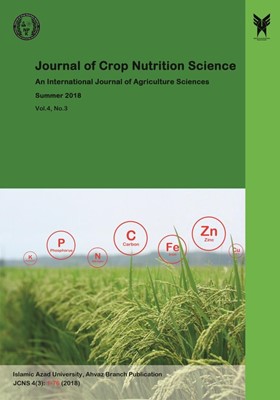-
-
List of Articles
-
Open Access Article
1 - Investigation Growth Indices Analysis and Sorghum ( Sorghum bicolor L.) Crop Production Affected Different Level of Nitrogen and Nitroxin Bio-Fertilizer
Armaghan Charkhab Mani Mojaddam -
Open Access Article
2 - Determination Effect of Mycorrhiza and Vermicompost on Accumulation of Seed Nutrient Elements in Maize ( Zea mays L.) Affected by Chemical Fertilizer
Hadis Karami Abbas Maleki Amin Fathi -
Open Access Article
3 - Response of Seed Yield, Its Components and Leaf Area Index of Spring Corn to Consume Vermicompost and Iron Nano fertilizer
Najmeh Razmandeh Saeed Zakernejad Khoshnaz Payandeh -
Open Access Article
4 - Evaluation of Microbial Biomass and Soil Carbon as Well as Weed Parameters on Potato Production Affected Different Weed Management
Afshar Azadbakht Mohammad Taghi Alebrahim Hamid Reza Mohammadduost Chamanabad Akbar Ghavidel -
Open Access Article
5 - Assessment Production of Natural Reactive Oxygen Species Affected on Dormancy Alleviation, Germination and Antioxidant System in Sunflower Seeds
Mahdi Shaaban Esfandiar Hassani Moghaddam Ezatollah Nabati Zahra Rahmati Motlagh -
Open Access Article
6 - Deterrent Effects of Alstonia boonei Oil on Oviposition and Progeny Development of Callosobruchus maculatus (Fab.) [Coleoptera: Bruchidae].
Kayode Ileke
-
The rights to this website are owned by the Raimag Press Management System.
Copyright © 2021-2025







